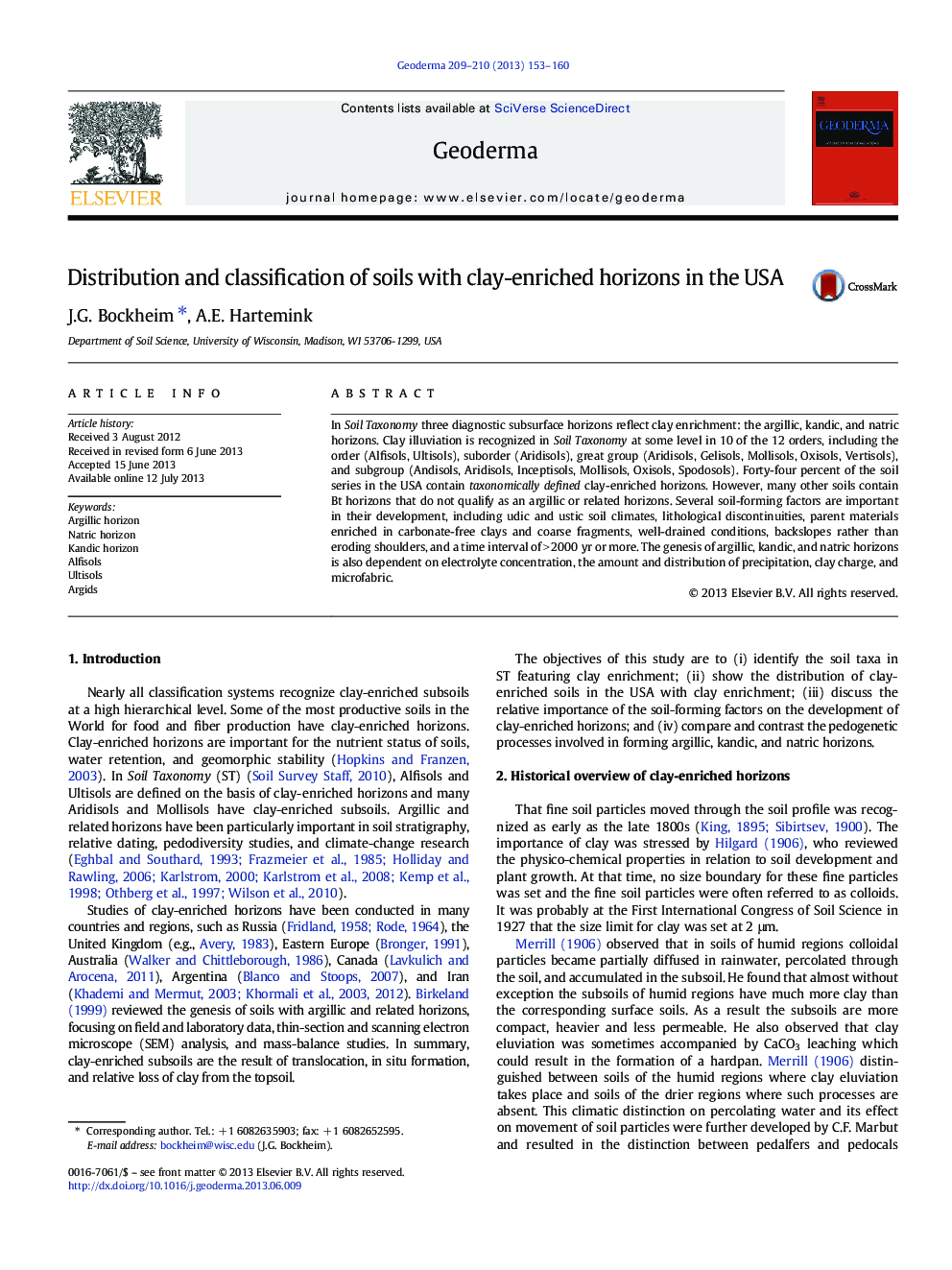| کد مقاله | کد نشریه | سال انتشار | مقاله انگلیسی | نسخه تمام متن |
|---|---|---|---|---|
| 6409108 | 1629481 | 2013 | 8 صفحه PDF | دانلود رایگان |
- 10 of 12 orders in Soil Taxonomy contain argillic, kandic, or natric horizons.
- 44% of the USA soil series contain clay-enriched horizons.
- 4.5 million km2 (56%) of the area of conterminous USA contains clay-enriched horizons.
- The relative importance of the soil-forming factors is discussed.
- The genesis of clay-enriched horizons is discussed.
In Soil Taxonomy three diagnostic subsurface horizons reflect clay enrichment: the argillic, kandic, and natric horizons. Clay illuviation is recognized in Soil Taxonomy at some level in 10 of the 12 orders, including the order (Alfisols, Ultisols), suborder (Aridisols), great group (Aridisols, Gelisols, Mollisols, Oxisols, Vertisols), and subgroup (Andisols, Aridisols, Inceptisols, Mollisols, Oxisols, Spodosols). Forty-four percent of the soil series in the USA contain taxonomically defined clay-enriched horizons. However, many other soils contain Bt horizons that do not qualify as an argillic or related horizons. Several soil-forming factors are important in their development, including udic and ustic soil climates, lithological discontinuities, parent materials enriched in carbonate-free clays and coarse fragments, well-drained conditions, backslopes rather than eroding shoulders, and a time interval of >Â 2000Â yr or more. The genesis of argillic, kandic, and natric horizons is also dependent on electrolyte concentration, the amount and distribution of precipitation, clay charge, and microfabric.
Forty-four percent of the soil series and 56% of the area of conterminous USA contain argillic, kandic, or natric horizons.
Journal: Geoderma - Volumes 209â210, November 2013, Pages 153-160
